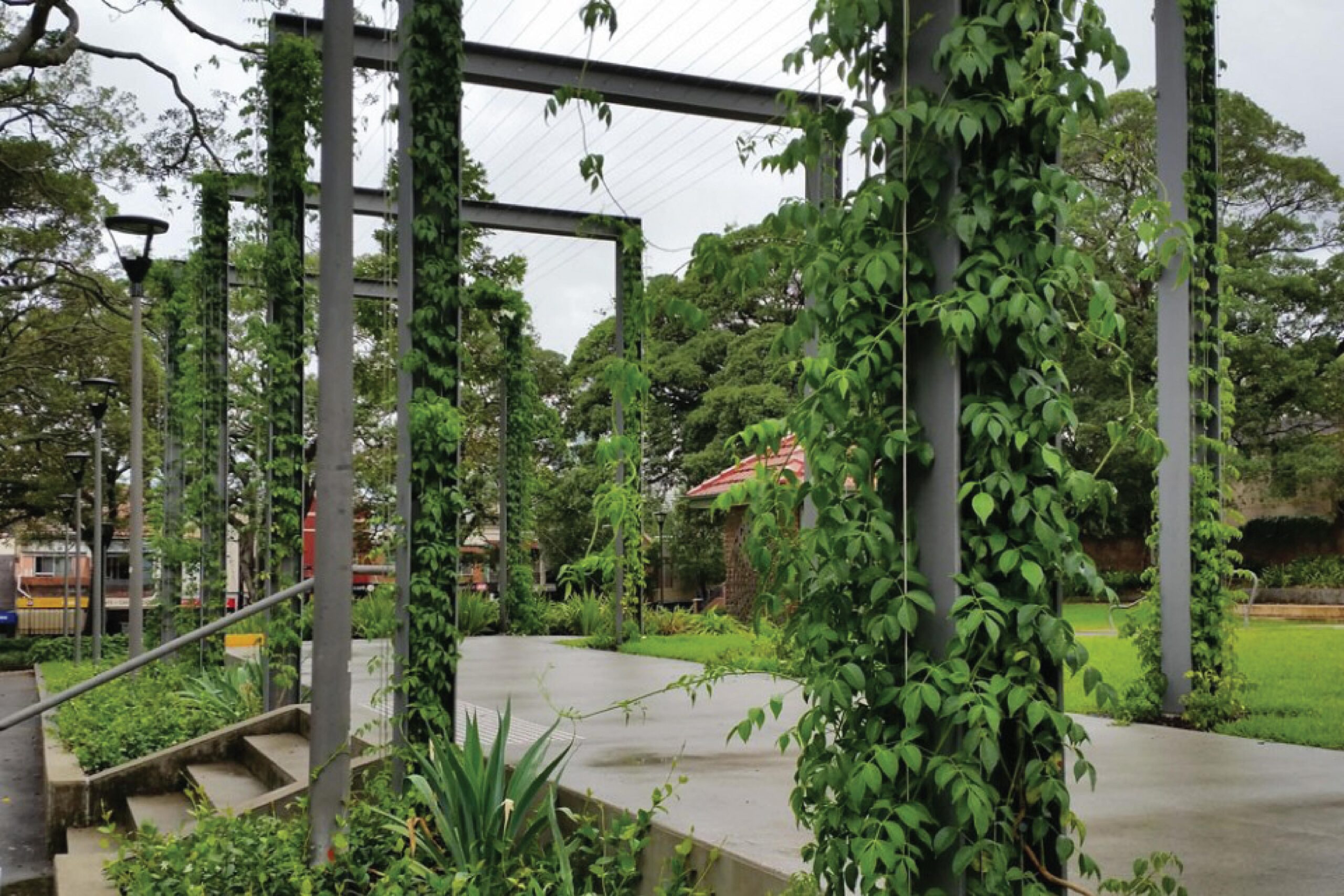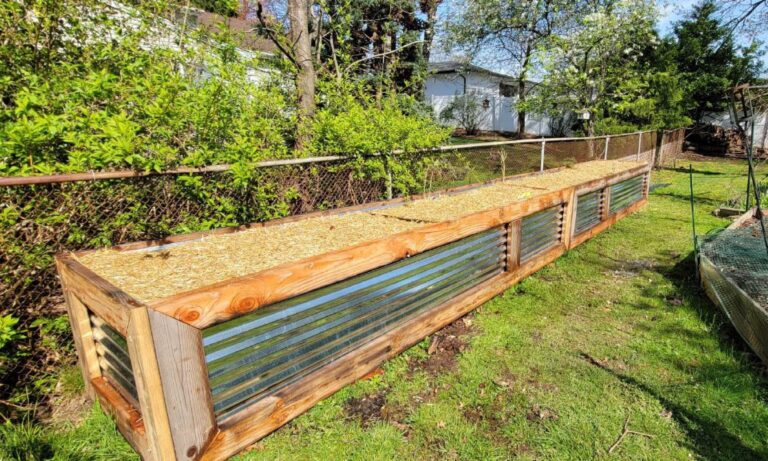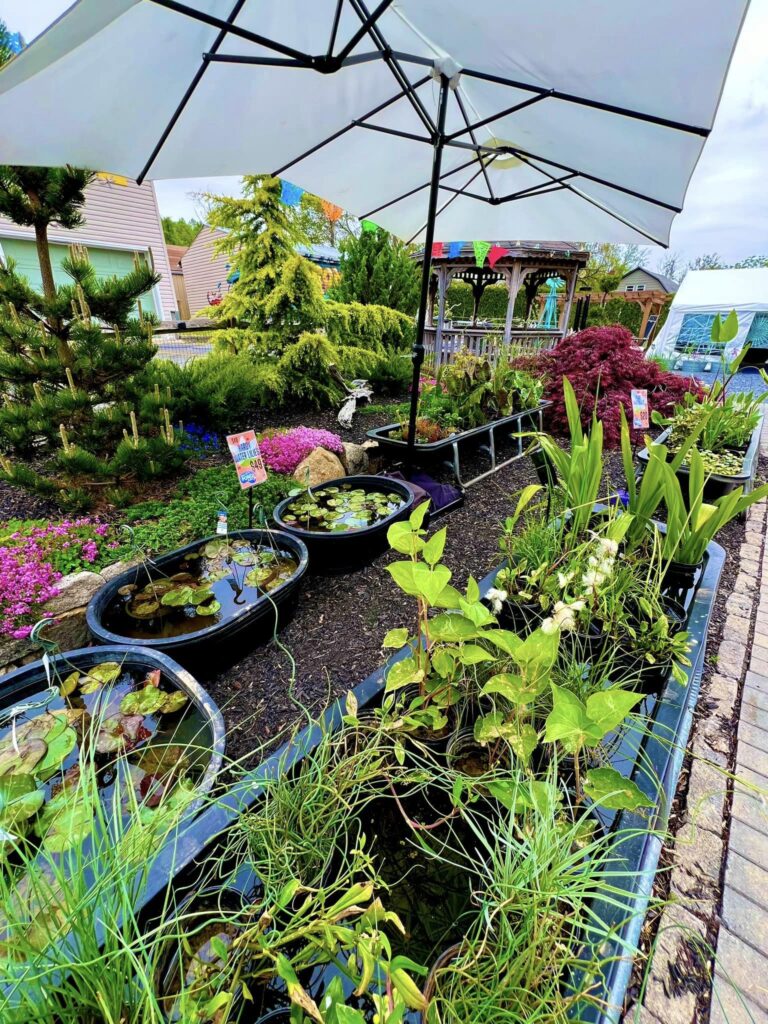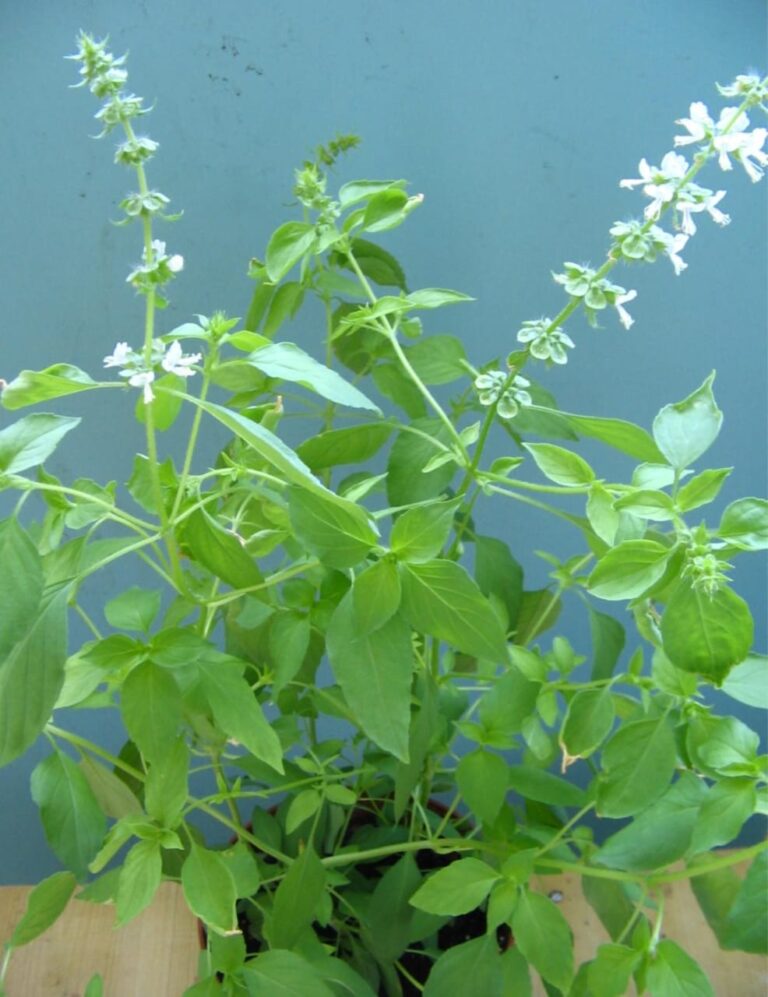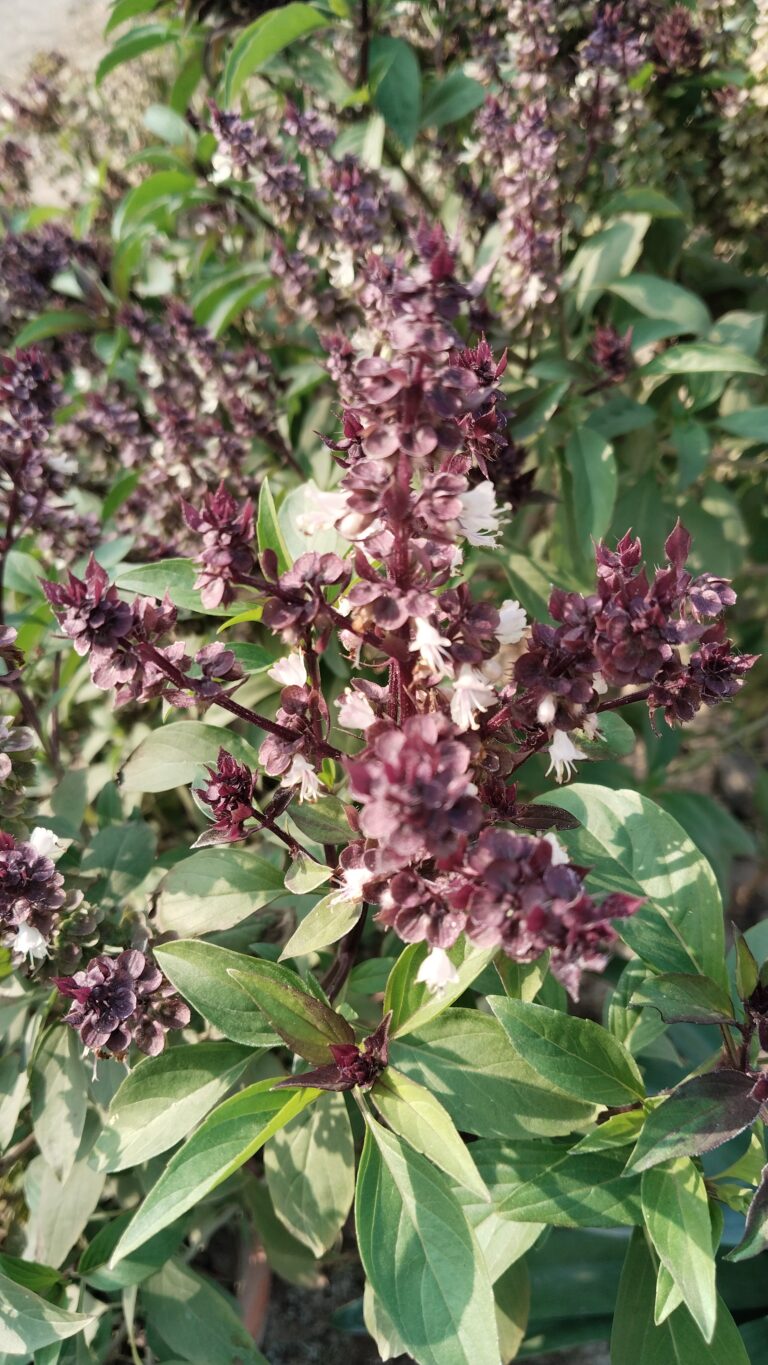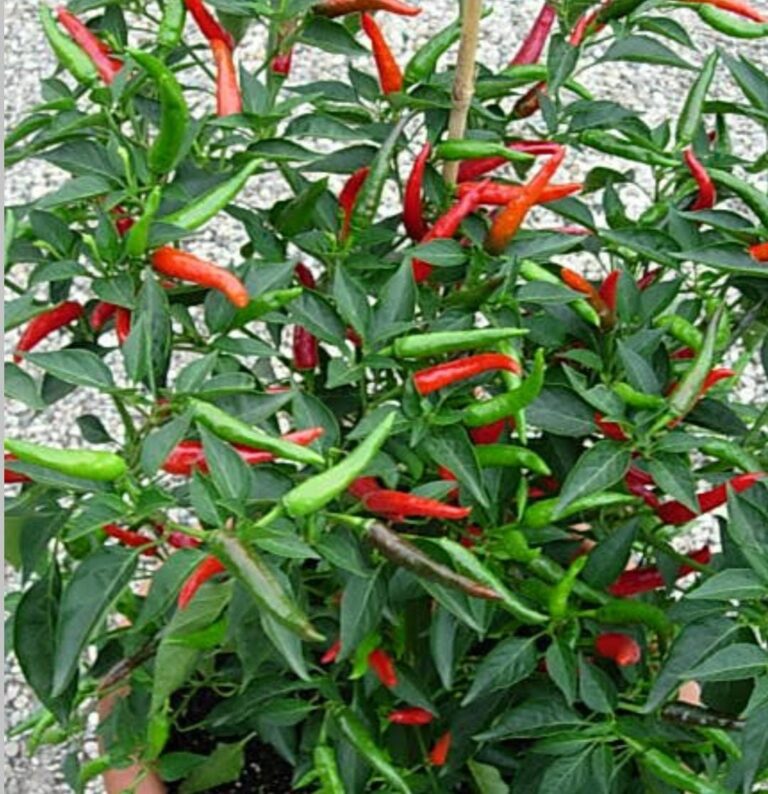Vertical Gardening: Bountiful Garden in 5 Easy Steps
Vertical Gardening: A Joyful Journey to Greener Spaces
Vertical gardening, or the practice of growing plants upward rather than outward, has taken the gardening world by storm. This creative technique addresses space limits while also adding aesthetic appeal to our living environments. However, vertical gardening is more than just a matter of aesthetics and convenience; it is also scientifically sound. In this blog, we’ll go over the benefits of vertical gardening as well as practical steps for creating your vertical garden at home, all while enjoying the delight of growing greenery in every aspect of our lives.
The Science Behind a Vertical Garden

Vertical gardening is fundamentally based on botany and ecology. Plants, like other living organisms, need specific circumstances to thrive, such as light, water, nutrients, and space. Traditional gardening distributes these nutrients across horizontal plots, whereas vertical gardening layers them, resulting in a multilayered environment. In my case, I have a large garden and have never tried any vertical growing methods other than trellises. But in this season, I began this trip. Be with me to see if I succeed. I document the entire adventure on my channel, My Friend Bob.
1. Maximizing Light Exposure
Plants in a vertical garden are positioned to maximize sunshine collection. This is critical to photosynthesis, the process by which plants transform light into chemical energy. A vertical garden, by arranging plants at different heights and angles, can ensure that all plants receive adequate light, even in tiny spaces.
2. Efficient Space Use

Vertical gardening is ideal for urban inhabitants who have limited space. Growing upwards allows you to develop a wide range of plants, from herbs and vegetables to decorative flowers, in small locations such as a balcony or even indoors. This space-saving method not only promotes plant growth but also converts underused areas into brilliant green zones.
3. Enhanced Air Circulation
Vertical gardens frequently improve air circulation around plants, lowering the danger of fungal diseases and pests. This airflow is especially useful in dense metropolitan areas where air quality may be impaired.
4. Water and Nutrient Management
These gardens can be constructed to use efficient watering technologies like drip irrigation or hydroponics. These systems feed water and nutrients directly to plant roots, reducing waste and ensuring that all plants receive the resources they require.
Benefits Beyond the Green

Beyond the scientific concepts, vertical gardening provides a plethora of benefits that bring joy to daily life:
- Mental wellness: Working with plants has been found to alleviate stress and promote relaxation. Gardening, whether planting seeds, watering, or simply admiring the greenery, can be a relaxing and rewarding experience.
- Aesthetic Appeal: Vertical gardens may convert ordinary walls and fences into living beauty. The variety of colors, textures, and shapes adds vibrancy to your home design, making it more attractive and exciting.
- Sustainability: Growing your own herbs, veggies, and fruits will lessen your carbon footprint and reliance on store-bought produce. Vertical gardening improves sustainable living and raises environmental awareness.
- Learning opportunities: Vertical gardening is an excellent approach to teach youngsters about plant biology, ecology, and sustainability. It’s a hands-on learning experience that instills a love of nature and a sense of responsibility for the environment.
A delightful step-by-step guide
Ready to start your vertical gardening adventure? Here’s a step-by-step plan to get you started, laced with fun and enthusiasm at every stage.
Step 1: Choose Your Space

Choosing the ideal location for your vertical garden is both an art and a science, combining creativity and practical concerns. This stage is enjoyable because it allows you to imagine how a once-blank wall or sunny area might be transformed into a lush, living canvas. Begin by examining light availability; most plants grow in direct sunshine, so a south-facing wall is excellent. Consider placing indoor gardens near windows or using grow lights to replicate natural light. Consider accessibility for watering and upkeep to ensure that gardening is a pleasure rather than a job.
Vertical gardening encourages you to creatively employ underutilized spaces, transforming balconies, patios, and even kitchen walls into green havens. As you plan, consider your garden as a rich tapestry of colors, textures, and scents that will bring life and joy into your house.
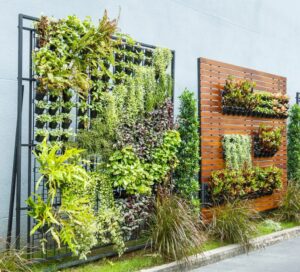
Step 2: Select Your Plants
Choosing plants for your vertical garden is an interesting process that combines scientific knowledge with personal desire. Consider your garden’s environment—light, temperature, and humidity all play important roles in plant health. Sun-loving plants like herbs (basil, rosemary) and succulents are ideal for sunny places, whilst ferns and ivy thrive in shadier areas. Consider the plant’s growth tendencies; climbers like beans and peas can climb trellises, but trailing plants like strawberries and nasturtiums cascade gracefully from hanging containers. Mix & mix for diversity and visual appeal, resulting in a harmonious combination of colors, textures, and smells.
The fun of this process is creating a living masterpiece that is unique to your location and style, whether it’s a kitchen herb garden or a floral arrangement. Accept the challenge of experimenting with new plants and enjoy seeing your garden develop and evolve with each new season.
Step 3: Select a Vertical Gardening System
A vertical gardening system is a fascinating experience that combines creativity and functionality. The appropriate system converts your space into a thriving garden, whether you live in an urban apartment or a suburban home. Wall-mounted planters are ideal for displaying herbs and flowers, transforming a plain wall into a beautiful living tapestry. Trellises and lattices provide support for climbers such as tomatoes and cucumbers, resulting in a lush, edible environment. Stacked pots and tiered shelves provide flexibility, allowing you to cultivate a wide variety of plants even in small places.
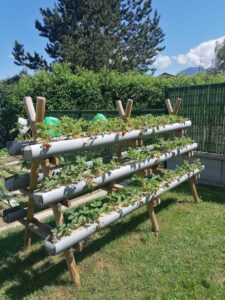
For the tech-savvy gardener, hydroponic systems offer a soil-free, water-saving alternative ideal for indoor installations. The delight of selecting a system is from aligning it to your aesthetic vision and gardening requirements, imagining how each setup will bring your place to life. With each option, you’re creating a one-of-a-kind, green paradise that expresses your individuality and love of nature.
Step 4: Soil and Nutrients
In the world of vertical gardening, soil and nutrients are the building blocks of plant life, transforming a modest structure into a vibrant green oasis. The enjoyment of cultivating plants begins with selecting the correct soil—a well-draining, nutrient-rich mix is required for robust growth in vertical environments. Vertical gardens, unlike typical gardens, require lighter soils to avoid structural pressure while yet providing necessary root support and food. Nutrients play an important role, with regular fertilization ensuring that plants acquire necessary components like nitrogen, phosphorus, and potassium (N-P-K).

This precise combination of soil and nutrients promotes lush foliage, vivid blossoms, and abundant harvests. The satisfaction of tending to your vertical garden comes from seeing your plants thrive, knowing that your attentive soil and nutrition selections are critical to their health. It’s a satisfying experience that ties you to nature’s cycles, all from the comfort of your own home.
Step 5: Planting and Maintenance
When your structure and soil are complete, it’s time to plant! Follow the spacing instructions for each plant to ensure that it has adequate room to grow. After planting, thoroughly water the garden, making sure the water reaches all layers. Regular maintenance tasks include watering, pruning, and pest and disease monitoring. Planting and upkeep are at the heart of vertical gardening, where the joy of nurturing life is combined with scientific accuracy. Proper planting begins with selecting the appropriate plants for your vertical space, taking into account elements such as light exposure, water requirements, and growth habits.
Ensuring sufficient spacing between plants is critical because it allows each one to get enough sunshine, air, and nutrients without crowding—which is essential for disease prevention and healthy growth. Maintenance, while frequently viewed as a job, may become a fun ritual that links you to your garden. Regular watering, adapting to the vertical configuration, and feeding with balanced nutrients will keep your plants healthy. Pruning and pest/disease monitoring are crucial measures that not only protect but also beautify your garden.
The joy is watching your plants grow and bloom, which demonstrates your care and devotion. Each step of planting and maintaining your vertical garden gives you a sense of satisfaction and delight, as you create a colorful, living artwork in your home.
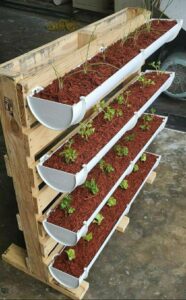
Embracing the Joy of Vertical Gardening
As your vertical garden grows, take time to enjoy the process. Plant care may be quite fulfilling, giving you a sense of accomplishment and a connection to nature. Vertical gardening provides numerous benefits, such as collecting fresh herbs for a meal or simply enjoying the sight of flowering flowers.
Remember that vertical gardening is a journey. It’s about exploring, learning, and evolving with your plants. Don’t be hesitant to attempt new things and see setbacks as opportunities to grow. Gardening, in any form, teaches patience and resilience, which benefit our lives beyond the yard.
Conclusion
Vertical gardening is more than simply a practical solution for limited space; it’s a celebration of creativity, sustainability, and the simple pleasures of nurturing life. By incorporating plants into our living spaces, we bring nature into our daily lives and build a stronger connection with the environment. Whether you’re an experienced gardener or a newbie, vertical gardening provides unlimited opportunities for research and delight. So, why not start now? Your voyage to greener, happier places awaits!

